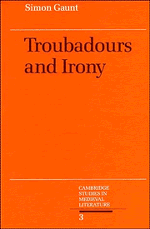Summary
Nobody now believes in the idealized image of the timid, lovesick and sincere troubadour wearing his heart on his sleeve as he composed songs about his haughty lady; this is an image some troubadours sought to create in order to enhance the effect of their songs. But this image obviously struck a chord with the first modern critics of troubadour poetry and courtly literature in general, for it dominated their critical writing; in the wake of Romanticism, nineteenth-century philologists, textual critics and literary critics alike imposed a model on the medieval texts they pored over with such enthusiasm, a model finally baptized amour courtois by Gaston Paris in an article on Chretien de Troyes, published in 1888. Although some of the premises that have continued to underlie medieval literary studies ever since then have been questioned in recent years, students of medieval literature are still, on the whole, confronted with critical assumptions that have their origin, not in the Middle Ages, but in nineteenth-century France and Germany. The modern idealizing image of the troubadour lyric as plaintive love poetry does not give an adequate picture of the tradition and it has obscured, not only the great variety, but also the humour and vitality, of the corpus. Moreover, if we accept that the modern reception of troubadour poetry has tended to play down its humour and irony, then we need also to re-examine the troubadours' reception in the Middle Ages in other courtly and non-courtly genres, both in Occitan and in other languages.
- Type
- Chapter
- Information
- Troubadours and Irony , pp. 183 - 185Publisher: Cambridge University PressPrint publication year: 1989



